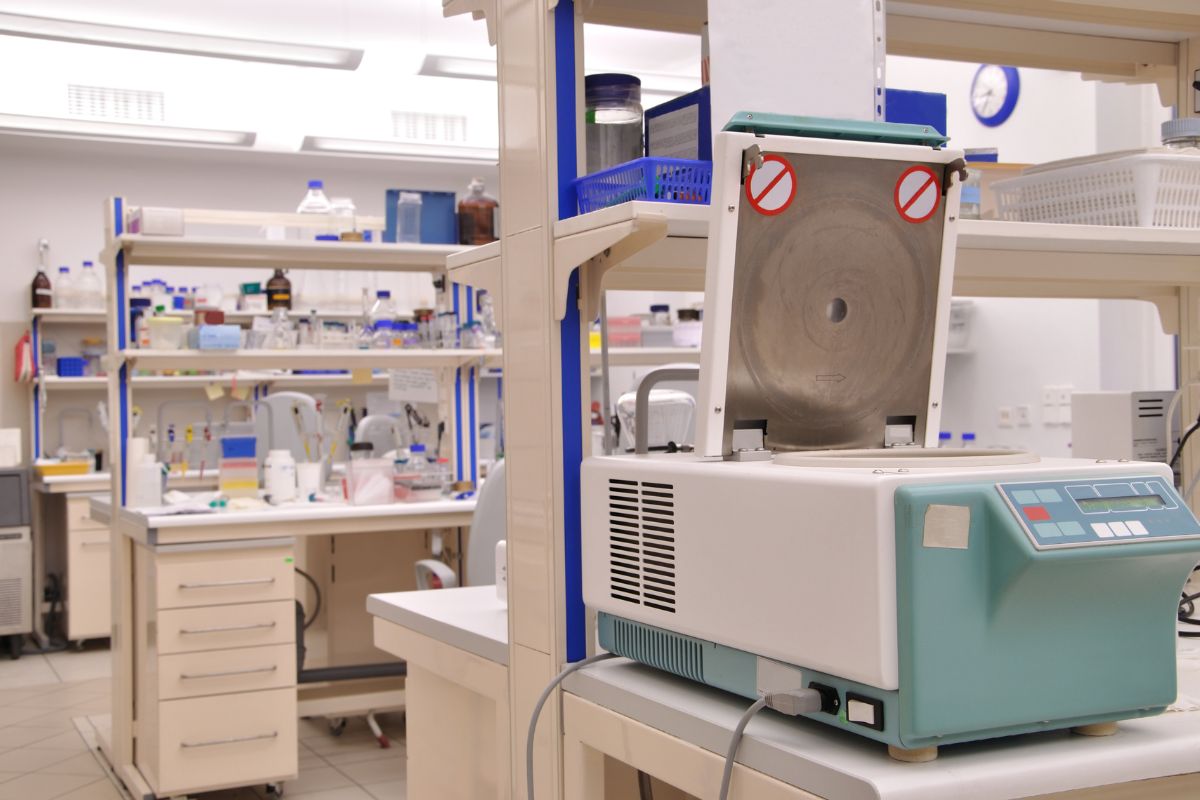Health and Safety Design Considerations for Safe Laboratories
When it comes to health and safety design considerations for labs, the choice and design of the laboratory table play a crucial role. The laboratory table is not only a functional workspace but also a key element in promoting a safe and efficient laboratory environment.
Health and Safety Design for Labs: Essential Considerations
It should be chemically resistant to withstand potential spills and corrosive substances commonly used in laboratories. Chemical-resistant tabletop materials such as epoxy resin or high-pressure laminate are commonly utilized for their durability and ability to withstand chemical exposure.
It should be ergonomically designed to support proper posture and reduce the risk of musculoskeletal injuries. Adjustable height tables allow researchers to customize the working surface to their preferred height, ensuring comfort and minimizing strain on the body during prolonged lab work.
Regular maintenance and inspection of the laboratory table are vital to ensure its structural integrity and stability. Periodic checks for any signs of wear, damage, or instability should be conducted to prevent accidents and ensure the longevity of the table.
Creating Safe Laboratory Spaces: Design Priorities
Creating safe laboratory spaces requires careful consideration of design priorities during the process of laboratory planning and design. By focusing on key elements, it is possible to establish a safe environment that minimizes risks and promotes efficient scientific research.
Laboratory planning and design involves creating a layout that optimizes the workflow and ensures the safety of researchers. Adequate ventilation systems are crucial to remove hazardous fumes and maintain air quality.
Fume hoods and exhaust systems effectively eliminate chemical vapors and airborne contaminants, safeguarding the well-being of personnel. Additionally, monitoring air quality parameters such as temperature and humidity contributes to a comfortable and safe working environment.
Proper storage and handling facilities for chemicals and biological samples are essential. Fire-resistant cabinets with secure locks and appropriate labeling prevent accidents and maintain organization. Separating incompatible materials in designated storage areas avoids potential reactions and contamination. Adequate space for handling, disposal, and decontamination processes further enhances safety.
Ergonomics and workflow optimization are important considerations. Adjustable workstations, benches, and equipment support researchers of varying heights and minimize the risk of musculoskeletal injuries. Well-designed workflows reduce unnecessary movement, improving efficiency and safety.
Proper lighting and visibility are critical for maintaining a safe laboratory. Sufficient illumination reduces accidents and enables accurate observations. Utilizing natural and artificial lighting sources, while mitigating glare and shadows, enhances visibility for equipment and hazardous materials.
Minimizing Occupational Hazards: Designing Ergonomic Laboratory Workstations
Creating a safe and comfortable work environment is crucial in laboratory settings to promote the well-being and productivity of researchers. Ergonomic design plays a vital role in minimizing occupational hazards and reducing the risk of musculoskeletal injuries. By incorporating ergonomic principles into the design of laboratory workstations, it is possible to create a conducive and safe space for scientific work.
An ergonomic laboratory workstation considers the physical needs and limitations of researchers. Adjustable workbenches, chairs, and equipment allow for customization to accommodate individuals of varying heights and body types. This flexibility ensures proper alignment, reduces strain on the body, and prevents repetitive motion injuries.
Designing workstations with adequate workspace and storage solutions helps maintain an organized and clutter-free environment. Researchers can easily access tools and materials without excessive reaching or stretching, reducing the risk of accidents and injuries.
The placement and arrangement of equipment and instruments within the workstation should also be carefully considered. Frequently used items should be within easy reach, minimizing the need for repetitive bending or twisting motions. This not only enhances efficiency but also reduces the risk of strain and discomfort.
By prioritizing ergonomic design principles in laboratory workstations, researchers can enjoy a workspace that minimizes physical stress and supports their well-being. Creating a safe and comfortable environment not only enhances productivity but also fosters a culture of health and safety in the laboratory.
Lighting and Visibility in Laboratories: Design Strategies for a Safe Working Environment
Proper lighting and visibility are essential factors in laboratory design that contribute to a safe and efficient working environment. Adequate illumination ensures researchers can perform tasks accurately, identify potential hazards, and maintain a high level of safety. By implementing effective lighting design strategies, laboratories can enhance visibility and reduce the risk of accidents.
When designing laboratory lighting, a combination of natural and artificial light sources should be considered. Natural light not only improves visibility but also creates a more pleasant and stimulating atmosphere. Large windows or skylights can be incorporated into the design to maximize the use of natural daylight. Artificial lighting, such as overhead lights and task-specific lighting, should be carefully planned to provide uniform and shadow-free illumination.
To minimize glare and eyestrain, appropriate shielding and diffusing techniques should be employed. Direct lighting fixtures can be supplemented with diffusers or reflectors to distribute light evenly without causing discomfort or hindering visibility. Light color and temperature should also be chosen wisely, with neutral tones being preferred to maintain accurate color perception.
Regular maintenance and inspection of lighting systems are imperative to ensure consistent performance and prevent flickering or dimming. Lighting fixtures should be kept clean and promptly replaced when needed to maintain optimal illumination levels.
By prioritizing proper lighting and visibility in laboratory design, researchers can work with precision, identify potential hazards, and navigate the space safely. A well-lit laboratory not only enhances productivity but also contributes to a culture of safety and well-being.
Promoting Safety Culture: Integrating Training and Education into Laboratory Design
Developing a strong safety culture within laboratory settings is paramount to ensuring the well-being of researchers and the integrity of scientific work. One effective approach to foster this culture is by integrating training and education into laboratory design. By incorporating safety training and educational elements into the design process, laboratories can create an environment that emphasizes safe practices and encourages ongoing learning.
Well-placed signs with concise instructions and warnings serve as constant reminders of safe practices and potential hazards. Additionally, visual aids and diagrams can be used to illustrate proper equipment handling techniques and emergency procedures.
The layout of the laboratory should facilitate the implementation of safety protocols. Clear pathways, designated storage areas, and easy access to safety equipment promote a safe and organized work environment. By considering the flow of activities and minimizing clutter, laboratories can reduce the risk of accidents and promote efficiency.
Including dedicated spaces for safety training and educational activities within the laboratory is also beneficial. These areas can be equipped with interactive displays, computer-based training modules, or demonstration stations. Researchers can engage in regular training sessions, workshops, or discussions on safety protocols, hazard identification, and emergency response. Providing resources for continuous learning reinforces a culture of safety and encourages researchers to stay updated on best practices.
By integrating training and education into laboratory design, institutions demonstrate their commitment to fostering a strong safety culture. Such an approach promotes awareness, knowledge, and a sense of responsibility among researchers, leading to a safer and more productive scientific community.
Conclusion
In conclusion, integrating training and education into laboratory design is a powerful strategy for promoting a robust safety culture. By incorporating safety signage, clear pathways, and designated spaces for training and education, laboratories can create an environment that prioritizes safe practices and continuous learning.














